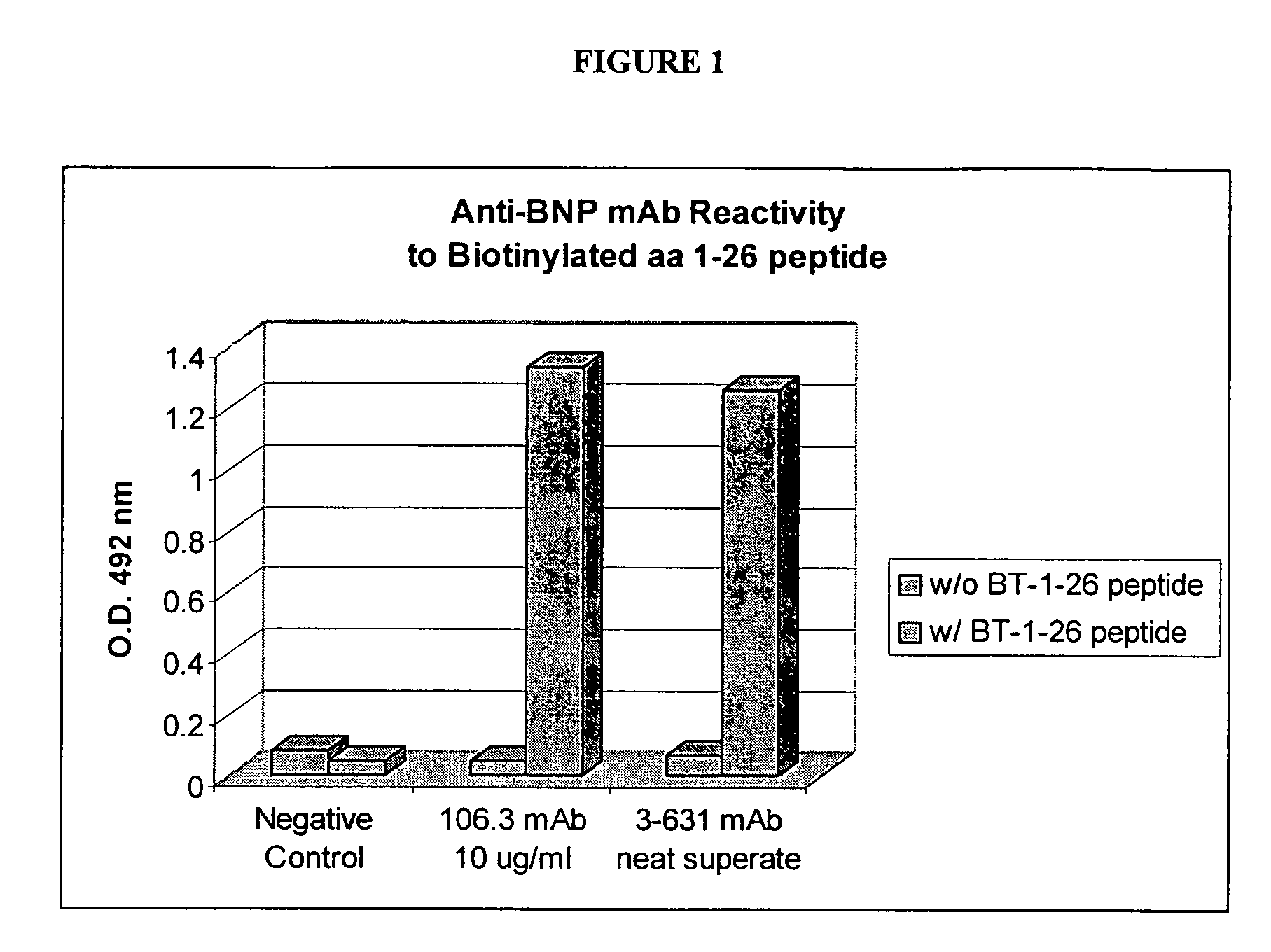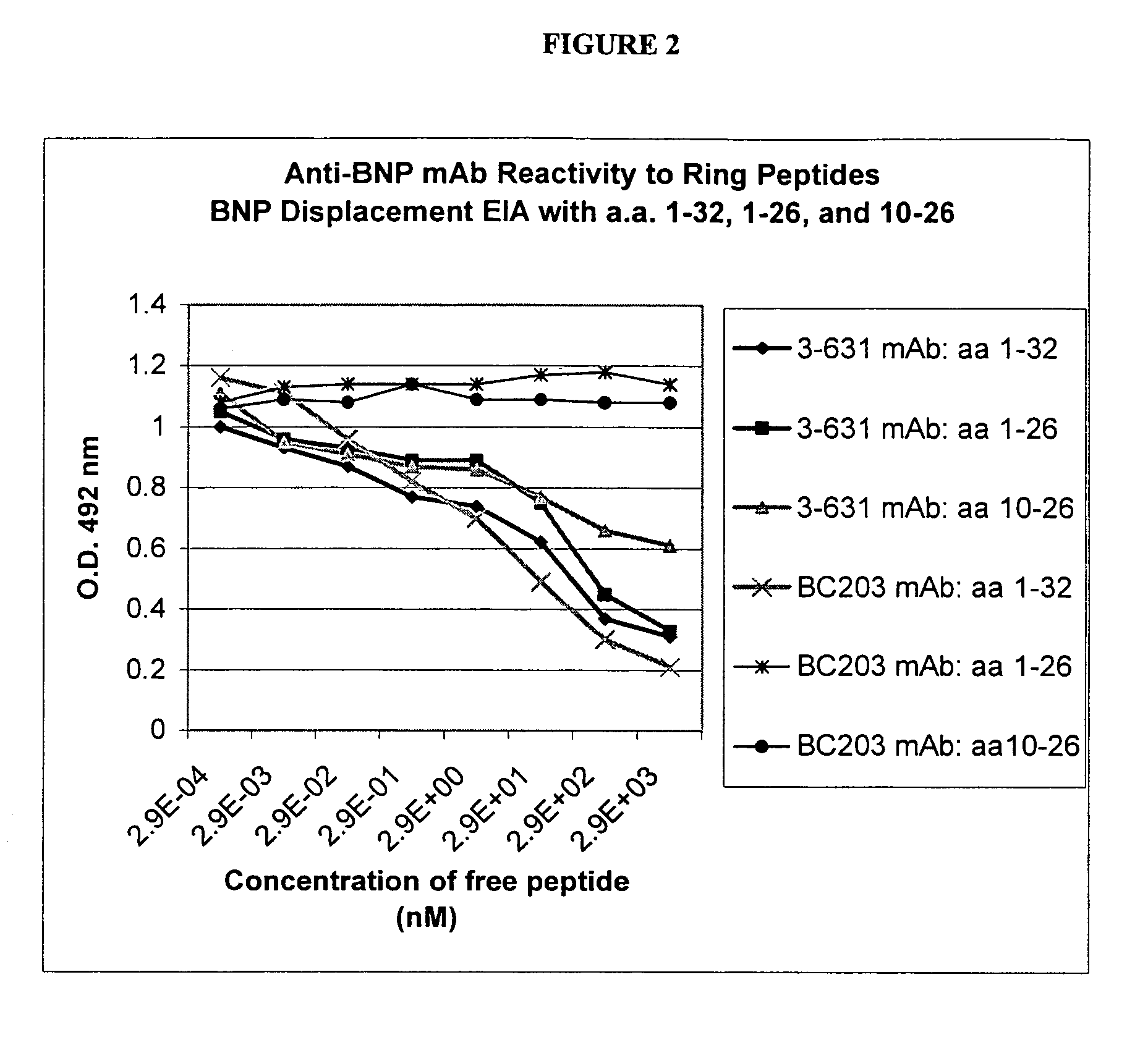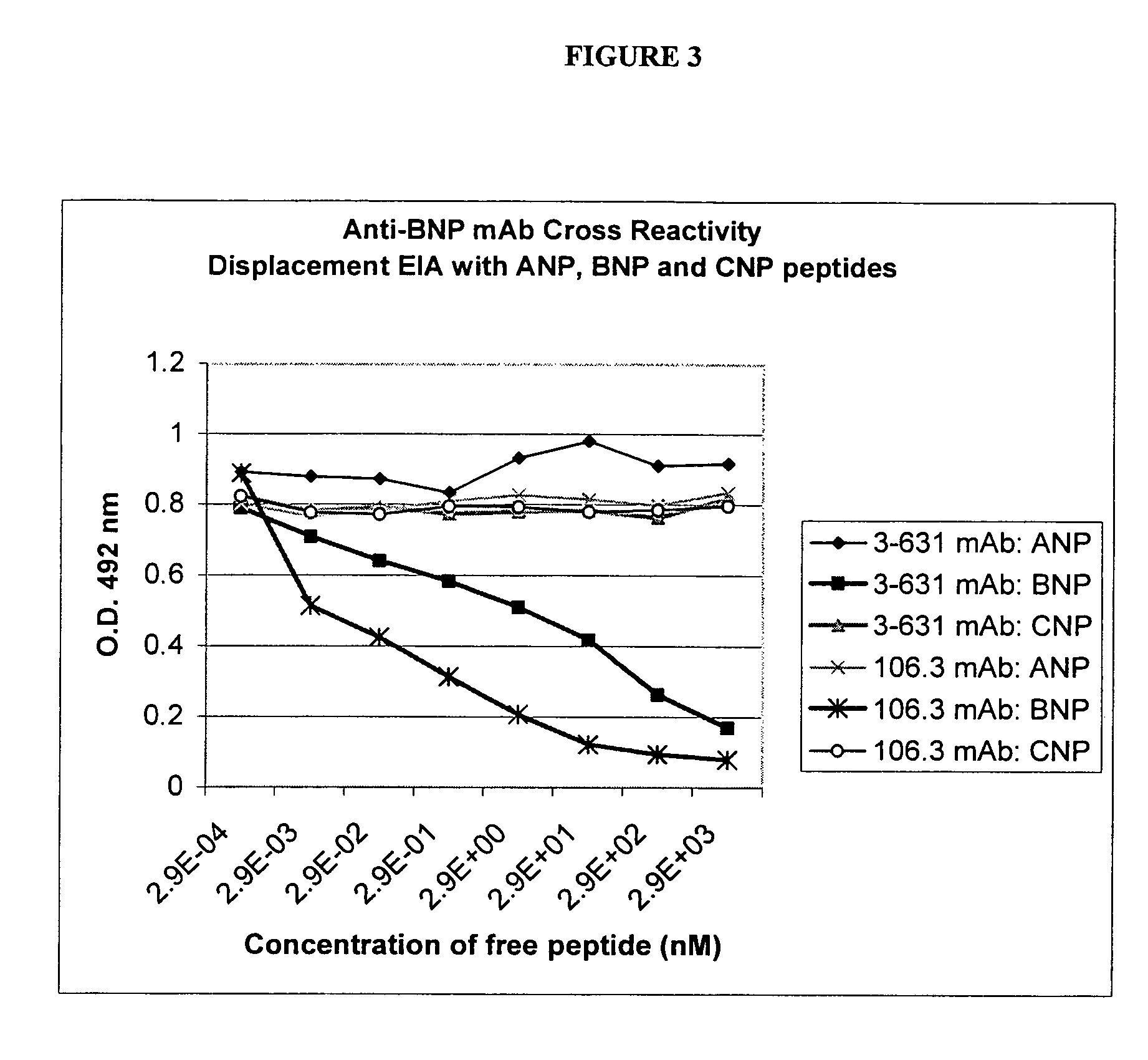Human ring specific BNP antibodies
a human ring specific, bnp technology, applied in the field of antibodies, can solve the problems of unstable peptides in plasma and serum, and inability to detect hbnp in the test sample,
- Summary
- Abstract
- Description
- Claims
- Application Information
AI Technical Summary
Benefits of technology
Problems solved by technology
Method used
Image
Examples
example 1
Immunogen Preparation
[0109]The antigen used to stimulate the immune response in the mice was synthetic, cyclized Hbnp (containing amino acids 1-32) which is available from Peptide Institute, Inc., Osaka, Japan. This cyclized Hbnp has the amino acid sequence shown below:
[0110]
(SEQ ID NO: 1)NH2-SPKMVQGSGCFGRKMDRISSSSGLGCKVLRRH-COOH(Disulfide bond between C10-C26)
[0111]Alternately, a modified BNP molecule could be used as an immunogen to produce a monoclonal or polyclonal antibody reactive to Hbnp. One such immunogen replaces one of the amino acids in the epitope included within amino acids 13 to 20 with a different amino acid. For example, the lysine at position 14 in SEQ ID NO:1, the methionine at position 15 in SEQ ID NO:1 or the serine at position 19 in SEQ ID NO:1 could all or each be replaced with a different amino acid, such as, but not limited to, an alanine.
example 2
Immunizations
[0112]The mouse model used was a female RBf / Dnj from Jax Labs, Harbor, Me., aged between 5-6 weeks old. The animal was immunized with Hbnp (SEQ ID NO:1 from Example 1 above) 6 times over 12 weeks using alternating Freunds Adjuvant (DIFCO, Detroit, Mich.) and RIBI Adjuvant (Corixa, Hamilton, Mont.) in 5-10 ug boosts. Two weeks after the 6th boost, the sera sample was tested on a microtiter EIA. Rabbit anti-mouse Fc Ig (RAMFc) (Jackson ImmunoResearch, West Grove, Pa.) diluted in saline was coated at 0.1 ug / well, incubated, then blocked with 2% fish gelatin. The plate was washed and serially diluted mouse sera samples were added for an 1 hour incubation. BNP peptide, containing amino acids 1-32 (SEQ ID NO:1), was diluted in Normal Mouse Serum (Fitzgerald Industries International, Concord, Mass.) and added to the wells. Following an incubation and wash, the detector reagent, monoclonal antibody (hereinafter “mAb”) 106.3 conjugated to alkaline phosphatase (hereinafter referr...
example 3
[0113]Three days after the pre-fusion boost, the splenic B-cells from the mice in Example 2 were used in a PEG-mediated fusion with the SP2 / 0 myeloma cell line. The cells were resuspended in serum free medium then pelleted by centrifugation. The supernate was discarded. Polyethylene glycol having a molecular weight (MW) of 1450 (ATCC, Manassas, Va.) was exposed to the cells by slowly adding 1 ml over 15-30 seconds followed by a 1 minute incubation, then washed in serum free medium. The cells were resuspended in HAT supplemented H-SFM (Life Technologies, Grand Island, N.Y.) with 10% FBS (Hyclone, Logan, Utah) and plated at a concentration of 1-5×105 cells / well. The plates were incubated for 10 days at 37° C. prior to screening using the microtiter EIA previously described in Example 2.
PUM
| Property | Measurement | Unit |
|---|---|---|
| temperature | aaaaa | aaaaa |
| concentrations | aaaaa | aaaaa |
| MW | aaaaa | aaaaa |
Abstract
Description
Claims
Application Information
 Login to View More
Login to View More - R&D
- Intellectual Property
- Life Sciences
- Materials
- Tech Scout
- Unparalleled Data Quality
- Higher Quality Content
- 60% Fewer Hallucinations
Browse by: Latest US Patents, China's latest patents, Technical Efficacy Thesaurus, Application Domain, Technology Topic, Popular Technical Reports.
© 2025 PatSnap. All rights reserved.Legal|Privacy policy|Modern Slavery Act Transparency Statement|Sitemap|About US| Contact US: help@patsnap.com



